NVIS notes

NVIS, or Near Vertical Incidence Skywave, is a means of HF propagation that provides signal within a medium distance range of approximately1 300 miles. The goal is to bounce a radio signal at a high angle off the ionosphere to cover the skip zone that would normally be a dead space between ground wave coverage and skywave coverage.
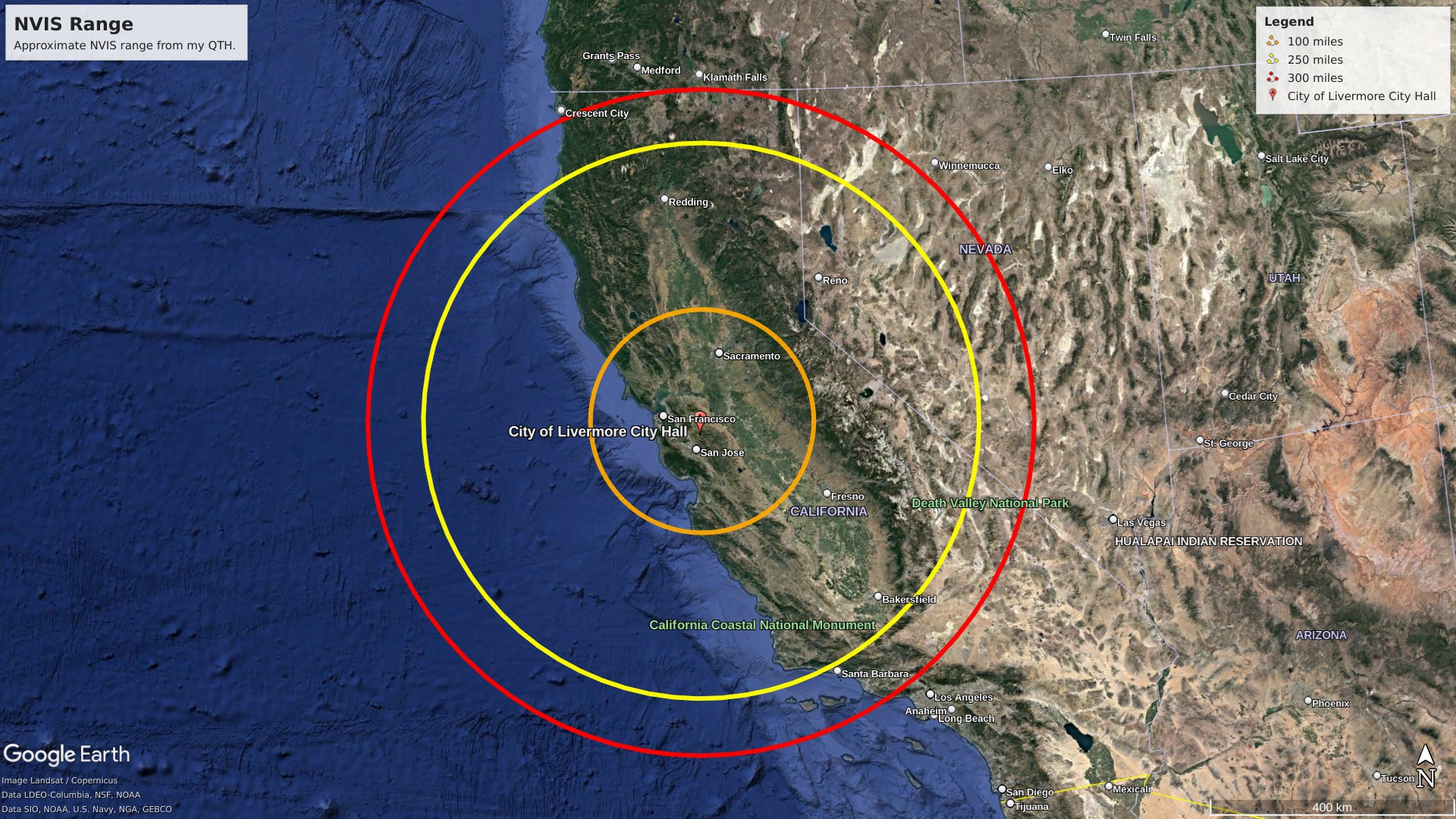

Frequency Selection
The actual frequencies depend a lot on conditions, but the most reliable amateur radio bands are:
- 160 meters: 1.8-2.0 MHz
- 80 meters: 3.5-4.0 MHz
- 60 meters: 5 MHz
- 40 meters: 7.0-7.3 MHz
Groundwaves are not likely to connect two radios, as terrain is virtually guaranteed to block the signal. Instead, there is a single high-angle bounce off the ionosphere:

There are some guidelines to picking a useful frequency:
- Long-haul uses higher frequencies in the 4-30 MHz range; in the day time, 10-25 MHz tends to work better while at night the lower frequencies in the 4-10 MHz range tend to work better. This uses regular skywave propagation.
- For shorter distances, NVIS frequencies should be chosen.
- In the morning or evening, 4/5 MHz is usually more effective.
- During the day time, 5-7 MHz is usually more effective.
- At night, the 1.8-3 MHz range is usually more effective.
There is a tool that we can use to figure out what is likely to be the most effective: the WWV beacons. These are time broadcasts sent out by NIST from Fort Collins, CO. They broadcast signals at 70 kW ERP on 2.5, 5, 10, 15, 20, and 25 MHz. There is also a station in Hawai’i that broadcasts on 2.5, 5, 10, and 15 MHz. By monitoring these signals, we can get a feel for what will be the most effective frequency:
| Strongest WWV frequency | Frequency range | Amateur band |
|---|---|---|
| 15/20 MHz | 6/7 MHz | 40 meters |
| 10/15 MHz | 5/6 MHz | 60 meters |
| 5/10 MHz | 3/4 | 80 meters |
| 2.5/10 MHz | 1.8-3 MHz | 160 meters |
The WWV stations send messages at specified times every hour:
| Minute | Announcement |
|---|---|
| :00 / :30 |
Station ID |
| :03 (WWVH) / :04 (WWV) | Manual changes (such as leap seconds), description of experimental signal sent at :08 |
| :08 (WWV) / :48 (WWVH) | Atmospheric propagation test signal |
| :10 (WWV) / :50 (WWVH) | DoD message, if one exists |
| :16 | Additional NIST alerts as necessary |
| :18 | Geophysical alert / conditions |
Due to the relatively low-bandwidth nature of the effective NVIS frequencies, consider using digital modes like PSK31, Olivia, or Winlink to transfer messages.
NVIS Antennas
For a field expedient NVIS antenna, an inverted ‘V’ dipole works well. However, a more robust option is a horizontal dipole a quarter wavelength above the ground, with a radial wire slightly longer than the dipole directly underneath.
The military’s NVIS antenna uses two inverted ‘V’ dipoles that also serve as the guy wires for the mast.

They also use loop antennas, aimed at a high angle towards their intended recipient, or quarter wave antennas on vehicles using tie ropes to angle the radio waves.


Some other antennas I’ve heard are the WWII-era Shirley and Jamaica antennas.
The resources page has field manuals and other docs that go a lot deeper into this topic.
- Virtually all distance measurements in radio are guaranteed to be approximate. This depends on a lot of factors, such as terrain, weather, atmospheric conditions, time of day, etc. ↩︎
Antenna update: it’s a quadrant antenna, apparently
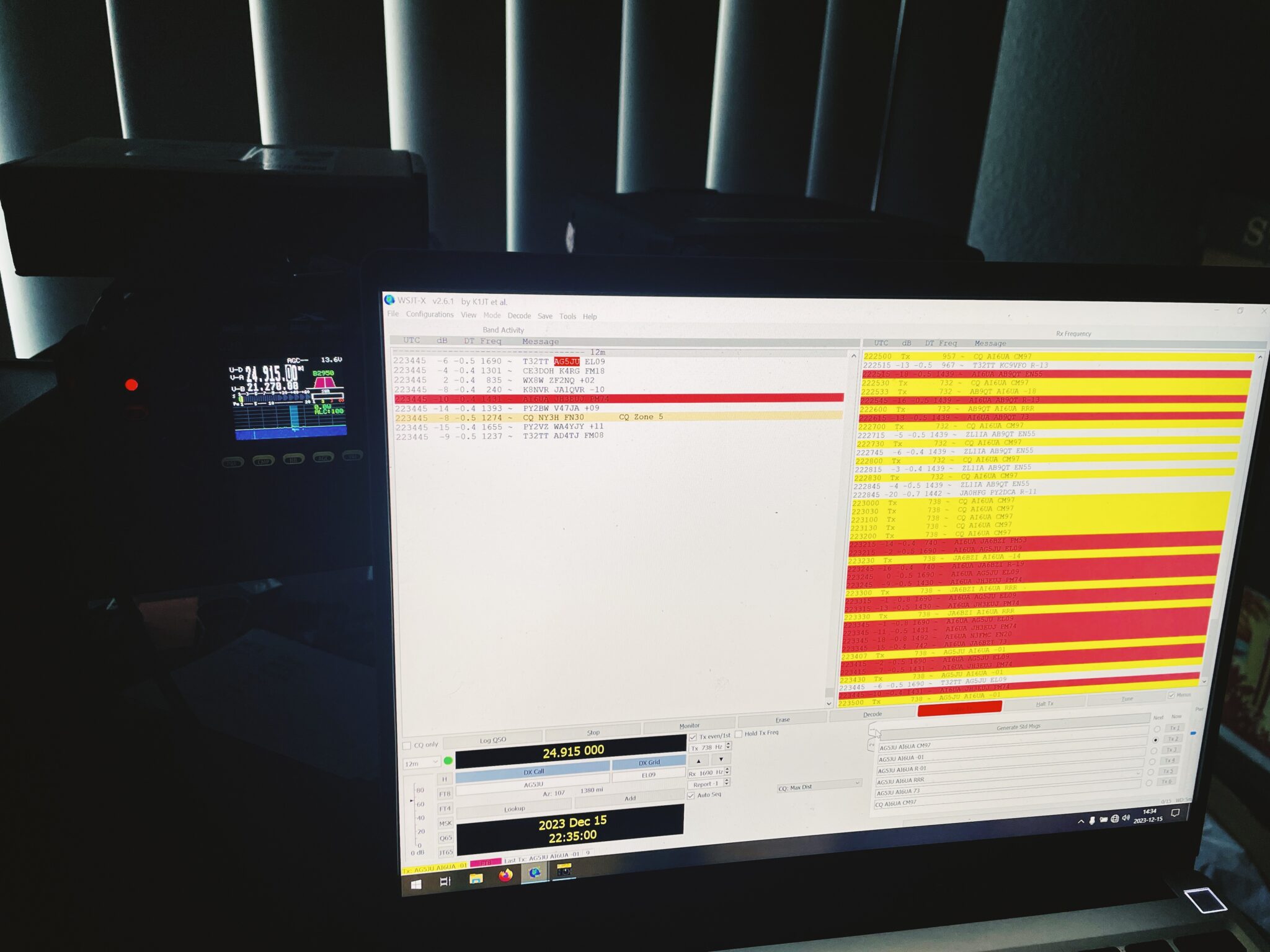
Previously, I wrote about my cursed antenna. Okay, it’s not cursed, it just looks that way. It turns out it’s resonant not on 10m, like I wanted it to be, but on 12m. I’m not sure if that resonance is because of the way that it’s set up or that I cut the legs a little long. I still have a lot to learn about antennas. Apparently, this type of antenna is called a quadrant antenna, and its propagation pattern ideally looks like this:

Mine is set up like such that the legs are north and east:
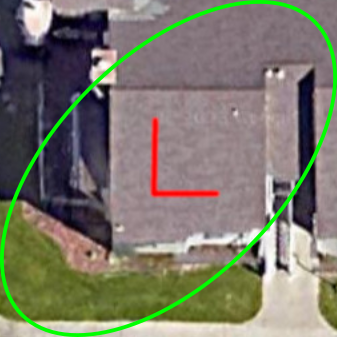
is a rough outline of the propagation pattern.
This sort of makes sense, comparing the bearing and distance1 to some of my contacts on FT8 today — all of which were between 15 and 20W of power out of the G90:
- BL02: 2341.996 miles, bearing 253.5°
- PM57kl: 5429.074 miles, bearing 308.5°
- FN41bn: 2750.295 miles, bearing 67.6°
- EN10nw: 1458.967 miles, bearing 72.7°
- FK49pk: 3428.521 miles, bearing 96.3°
- EN71lh: 2075.933 miles, bearing 70.7°
- EN55hp: 1854.284 miles, bearing 61.6°
- PM53cn: 5630.352 miles, bearing 305.8°
- EL83td: 2654.033 miles, bearing 100.3°
- AH46cc: 4757.746 miles, bearing 230.9°
- EL99hx: 2484.816 miles, bearing 89.6°
- EL09sm: 1566.271 miles, bearing 103.7°
- EN06ph: 1419.404 miles, bearing 57.1°
- EM73oi: 2210.555 miles, bearing 85.8°
- BL02hb: 2383.869 miles, bearing 253.1°
The contacts in italics took some work to reach, even on 20W of power. The Korean call (PM57) makes sense as one of the furthest grids I reached. The others I strongly suspect were due to propagation patterns on the antenna. In particular, I had trouble with some of the Texas and other Southern states.
FT8 has been pretty useful for exploring the propagation of both the antenna and the bands based on the time of day and weather conditions, though it’s still not my favourite mode.
- I don’t get the full six digit grid to my contact via FT8, so if I can’t get their grid via QRZ I use XXNNmn as their grid via NØUK’s Maidenhead Grid Distance & Bearing Calculator. ↩︎
Chasing waterfalls
In a previous post, I mentioned setting up the SuperAntenna indoors. However, I couldn’t get it tune much of anything. I ended up building a dipole with the legs roughly 8¼ feet long (e.g. for the 10m band), however I couldn’t get it set up fell length indoors, so it ended up with the legs at 90° angles to each other.

This antenna uses an antenna hardware kit I’ve had lying around forever, along with some silicone-coated copper wire I have a couple small 100′ spools of. I figured better to construct the antenna and see what happens. Well, here’s what happens:

This is the antenna tuned up on the 10m band. I need to spend some time thinking about what that SWR graph says about the antenna’s performance, but the point is that the antenna wasn’t bad. I still had a hard time picking anything up, but I tried this in the evening when the 10m band wasn’t so hot. I figured I’d see what else I could see. I’ve mostly stuck to the 40m, 20m, and 10m bands, but there’s a couple more bands in between the 10 and 20m bands (e.g. the 12, 15, and 17m bands).
Turns out I had the best luck on the 15m band.
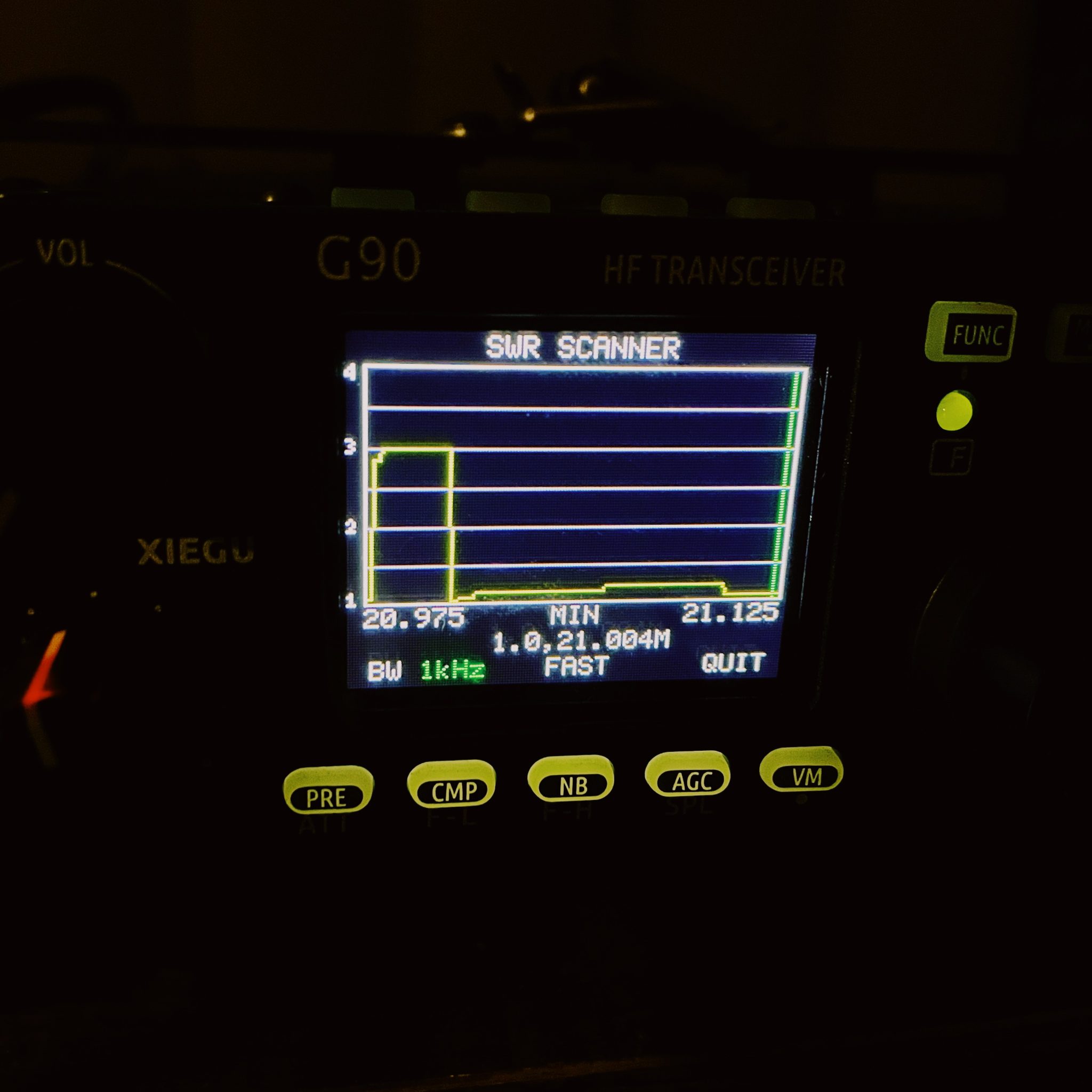
I was able to receive a couple signals decently enough, including one that I think is a PSK31 signal.
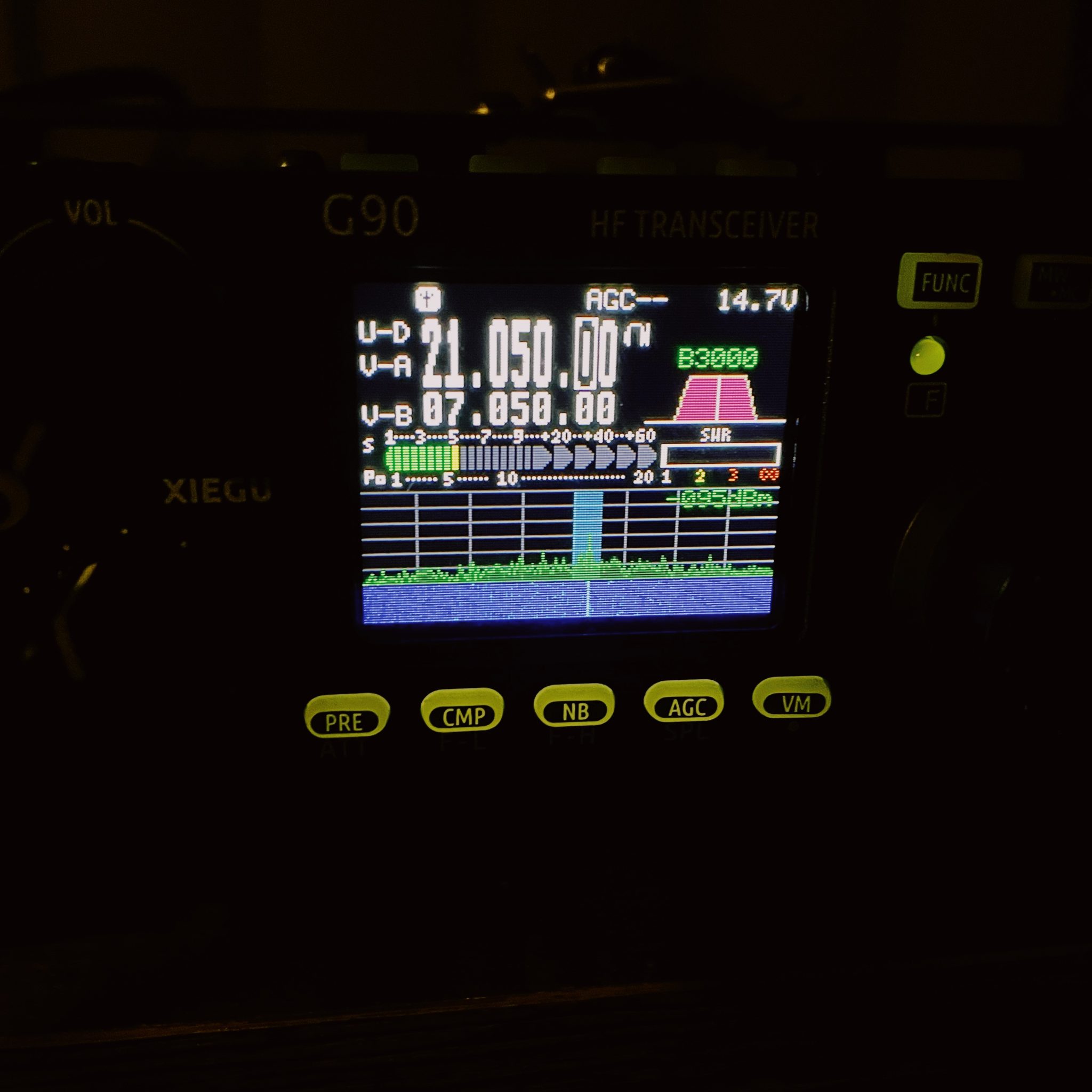
Here’s a short video of the signal:
10m Contest: no dice

I went to a local park to try to take part in the 10m contest. I brought the FT-817 because I don’t have a battery yet for the G90 and I don’t have an antenna connector for the KX2. For an antenna, I set up the Superantenna on the picnic table; I probably should have strung up something else but I was already getting enough weird looks.
I could hear quite a few people on SSB, and I could see a lot of activity on FT-8 and even some on JS8Call. However, I noticed my radio wasn’t transmitting at all. I poked around at it to see if I could figure it out, but couldn’t get it sorted. I had a brief bit of panic that I had blown the finals: at one point, the ATU had stuck in tuning mode. Fortunately when I got home, I thought to reset the radio1 (hold down the F key while you power it on), and then it began transmitting. It wasn’t receiving V/U modes very well, though. I’m not sure if that’s normal (I almost never use it for V/U), or if something else is going on.
Some lessons learned:
- I really need to get some wire winders.
- It would be nice to simplify the setup as much as possible: right now, I’ve got the radio, Signalink, and Z-817, with cables to connect pretty much everything to everything else more or less.
- I’ve never had much luck transmitting on the MP1 Superantenna. It might just be bad luck, and to be fair, this time was due to the radio not transmitting. Still, I don’t think I’ve ever actually made a contact on it.
I’ve been coming to find I’m really only interested in FT8 as a “can anyone hear me” sort of deal. It doesn’t convey any useful information, and honestly just isn’t fun anymore.
- Yes, I tried turning it off and then back on again (more than once, even) while at the park. ↩︎
| Posted in Antennas, FieldNotes, Radios | No Comments »
Apartment radio
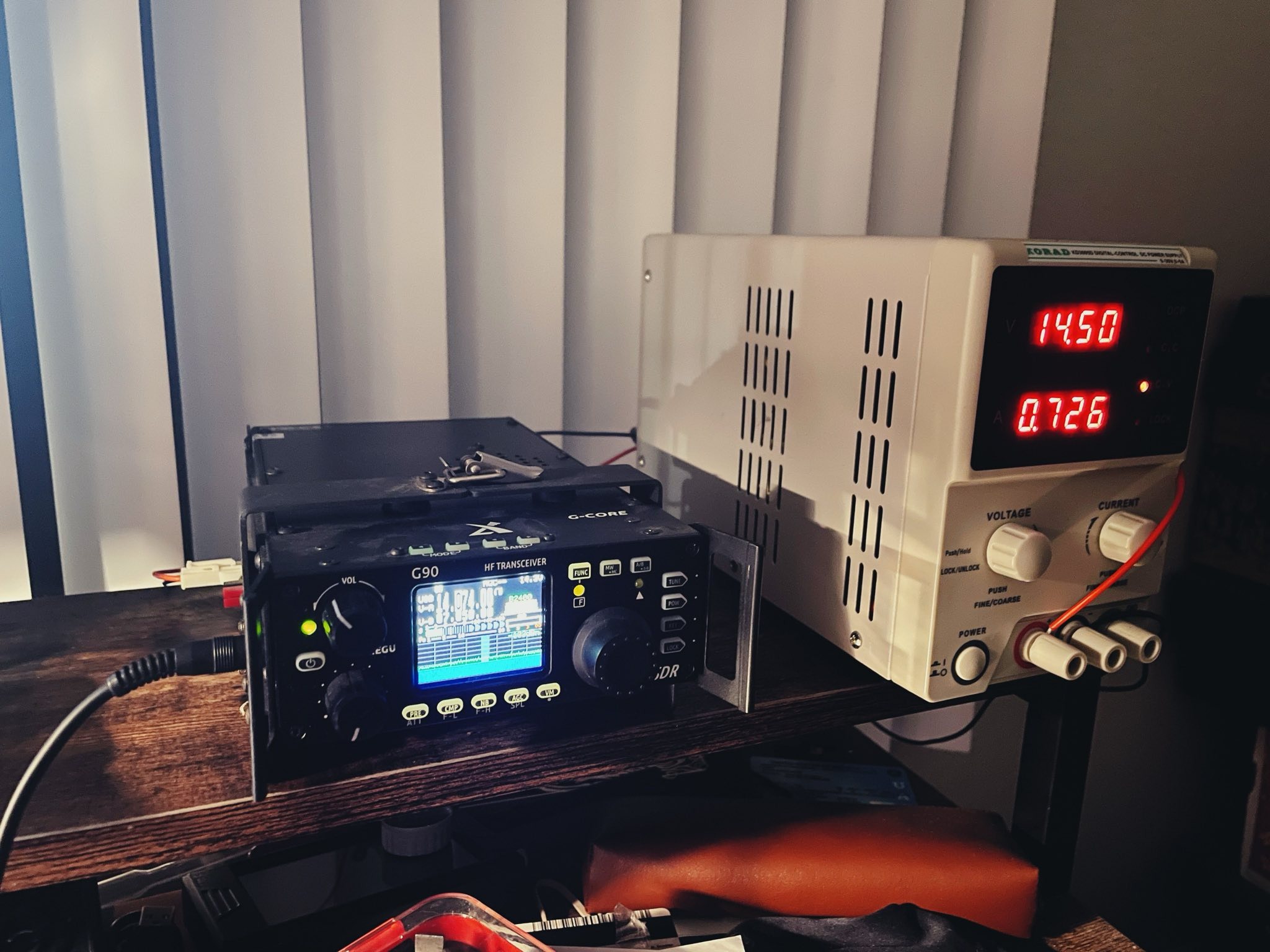
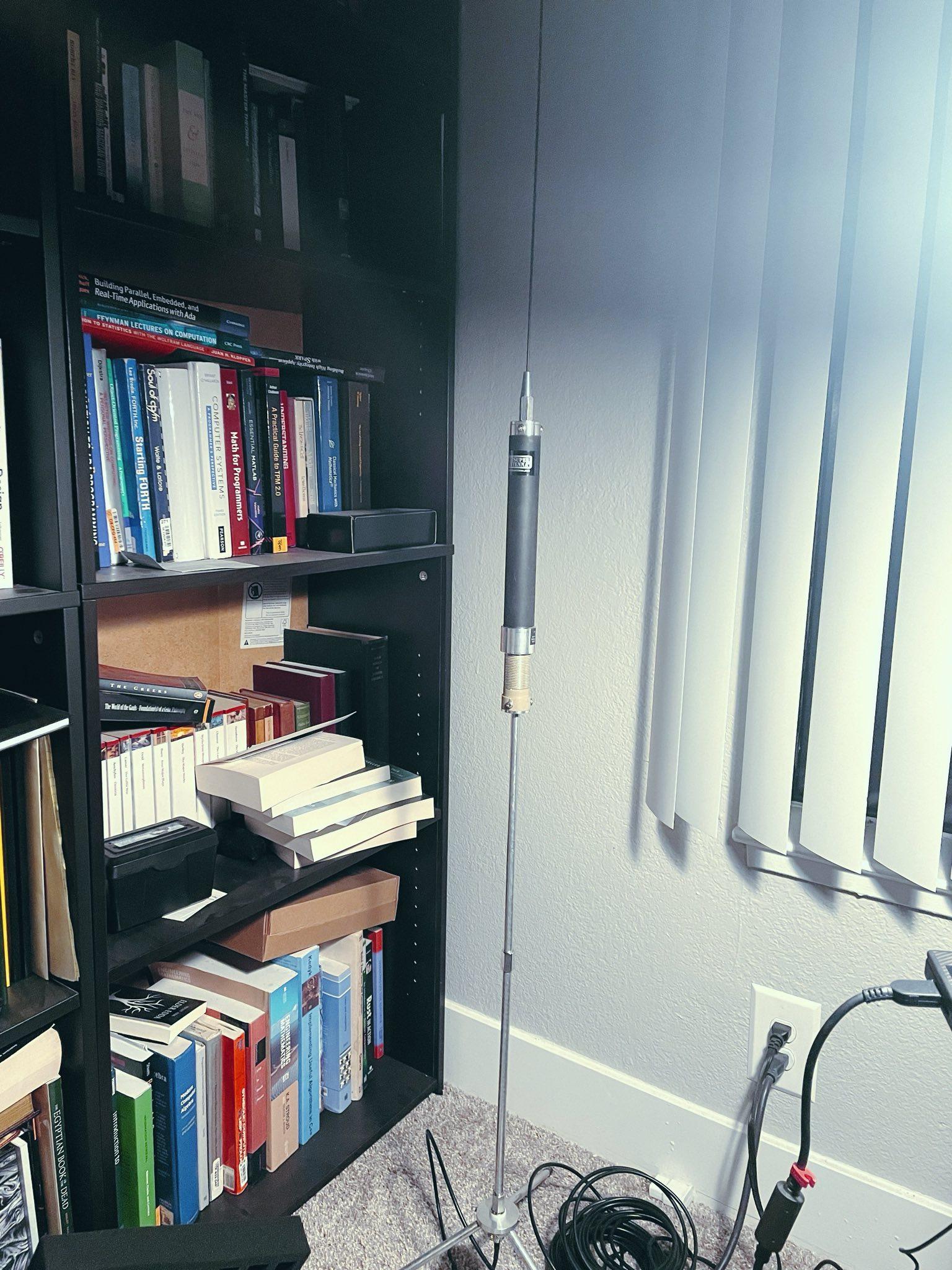
I set up the G90 and power supply on my bench, and stuck the SuperAntenna in the corner. It’s not a great set up (my feed line is way too long), but I could receive a little. I think my roof is metal lined though, because I struggle to get much of anything.
09.25.20First Time on FT8
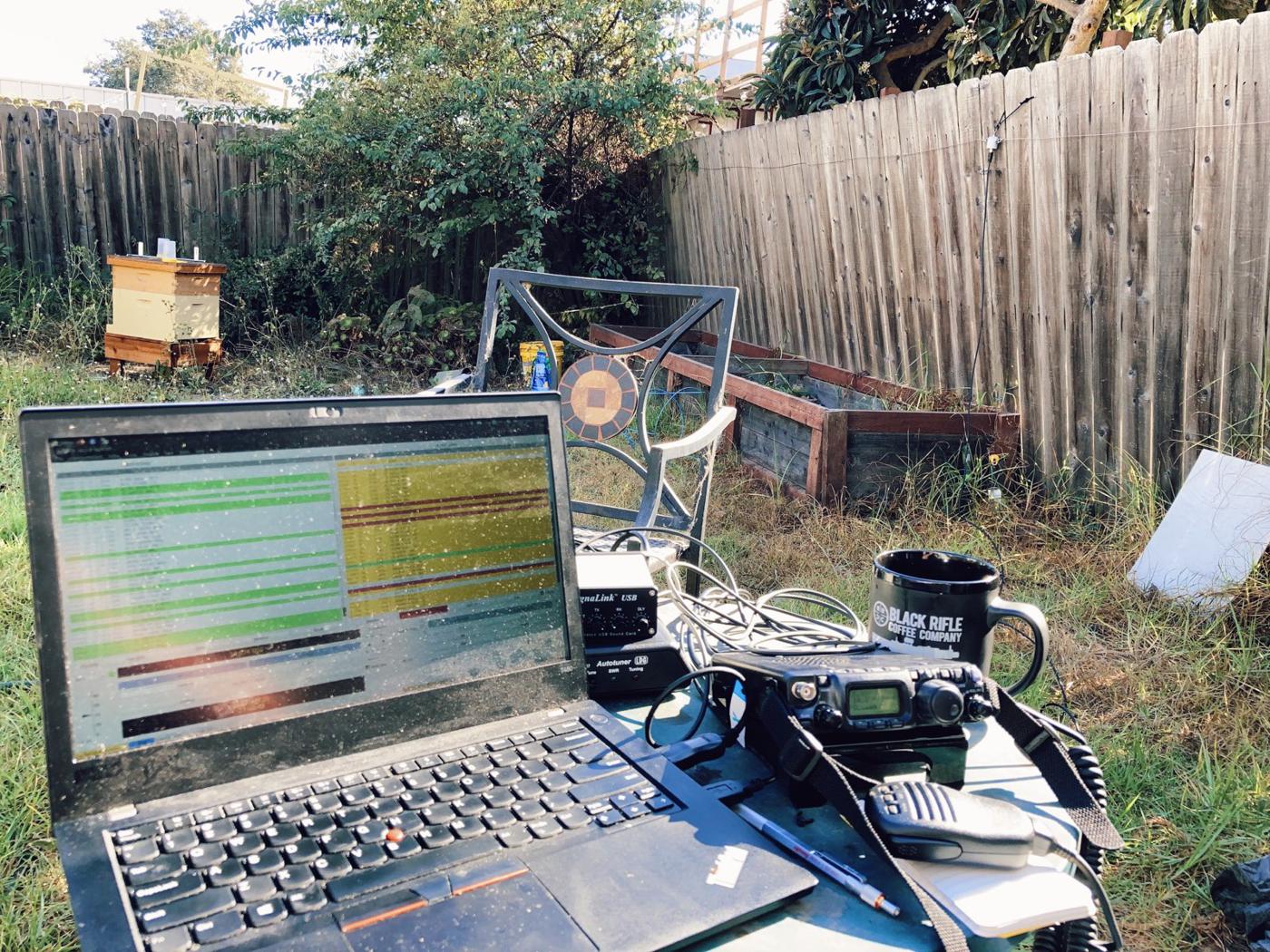
Worked FT8 today for the first time – I tried js8call but couldn’t get it working. I worked entirely on 20 meters and made contacts in
- QM09 – Japan
- DN88 – North Dakota, USA
- FN04 – Ontario, CA
- FM19 – Pennsylvania / Maryland, USA
- EM69 – Indiana / Illinois, USA
- DN84 – South Dakota, USA
- DM78 – Colorado, USA
- DM79 – Colorado, USA
- EM16 – Oklahoma, USA
- QM08 – Japan
- EN43 – Wisconsin, USA
- BL01 – Hawai’i, USA
So – two countries (though HI probably counts as one in this regard) and eight states over a period of two and a half hours (with some breaks) using a glorified walkie talkie and some speaker wire strung up on my fence. The average distance for a contact was right around 2,000 miles and the longest was almost 5,000 miles. Radios are freakishly amazing.
Some technical notes
I used my Yaesu FT-817 and a Radio Oasis 20m dipole strung along my fenceline oriented roughly north-south, probably 5 or so feet off the ground. I noticed that I couldn’t make contacts with a signal below about -6dB, though I made one contact at -8 dB. The radiation pattern of a dipole is orthogonal to its orientation, and my Japan contacts were in a fairly western line to my antenna – that’s probably what made it work. I used the Z817 antenna tuner to try to tune to each frequency as I switched, maybe that helped.

| Posted in Antennas, Theory | No Comments »